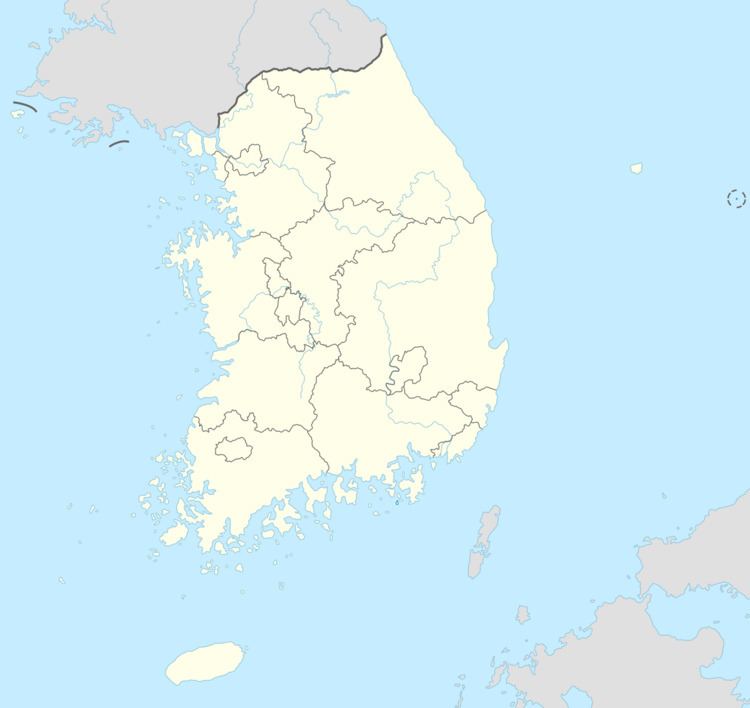Established 1952 Abbot Blasio Park | Prior Gregorio Lee Phone +82 54-971-0621 | |
 | ||
Other names St Maurus and St Placidus Abbey Founder(s) Fr Timothy Bitterli, OSB Dedicated to Saint Maurus, Saint Placidus Similar 왜관성당, 가실성당, 왜관성당 수녀원, 천주교대구대교구, 삼청3리 Profiles | ||
100 jubilee weeks of waegwan abbey 2 wmv
St Maurus and St Placidus Abbey, Waegwan, Chilgok, North Gyeongsang, South Korea is a Benedictine monastery of the Congregation of Missionary Benedictines of Saint Ottilien. Established in 1952 by Korean monks who had survived the dissolution of St Benedict's Abbey, Tokwon, and Holy Cross Abbey, Yanji, the monastery is currently home to 131 monks. Abbot Fr Blasio Park is the community's superior.
Contents
History
With the rise of Communism in China and North Korea, the monasteries of the Congregation of Missionary Benedictines of Saint Ottilien in Tokwon and Yanji were dissolved. A number of the monks — Germans, Koreans, and Swiss — were interned in labour camps, where some were executed. Twenty-six surviving Korean monks fled to South Korea. Upon hearing that they had formed a nascent monastic community in Busan, Archabbot Chrysostomus Schmid of St Ottilien ordered Fr Timothy Bitterli, a Swiss Missionary Benedictine who at the time resided at St Paul's Abbey, Newton, to relocate to South Korea in order to assist the community of Korean monks.
Bitterli arrived in 1952, and met the Korean monks in Daegu. Soon after, the community purchased property in Waegwan, where a monastery was completed in 1955. By this time, several German and Swiss monks who had been served at St Benedict's Abbey, Tokwon, and Holy Cross Abbey, Yanji, returned to East Asia to continue their missionary apostolate.
By 1956, the monastery had been raised to a simple priory under Bitterli's leadership. On February 17, 1964, the monastery became an abbey. At this time, Fr Odo Haas was elected the community's first abbot. During Haas' reign, dependent houses were established in Busan and in Daegu. In 1971, Haas was succeeded by Fr Placidus Ri, who thus became the first ethnically Asian superior of a Missionary Benedictine monastery. Under Abbot Placidus, a new abbey church was constructed in 1975, and the monastery's printing and publishing endeavors were expanded and modernized. Additionally, Abbot Placidus oversaw the expansion of Waegwan Abbey's foundation in Seoul, which was enlarged from a study house for clerics to include a retreat center and a branch for the Waegwan Publishing House. In 1985, monks from Waegwan were sent to the Philippines to assist the fledgling monastic community in Digos.
Apostolic Work
Dependencies
Many of the monks of the Abbey of Waegwan are occupied at a number of dependent monastic foundations. One of these, St Joseph's Monastery, Namyangju, was elevated to a simple priory in 1998. Another, the "Newton II" community at St Paul's Abbey, Newton, succeeded the dwindling population of the original monastery, and was elevated to a simple priory in 2004.
Personnel
As of May 18, 2011, 111 solemnly professed monks (46 of them priests) were members of the monastic community at Waegwan. At this time, the abbey also included 17 temporally professed monks, two novices, one oblate, and ten postulants.
Abbot Fr Simon Petro Ri is the current superior of the monastic community. He was elected and confirmed on August 23, 2001, and received the abbatial blessing on September 11, 2001. Abbot Simon is the fourth Abbot of Waegwan. Abbot Simon is assisted in his duties by Fr Polycarp Kim, prior, and Bro Andrea Jeon, subprior.
